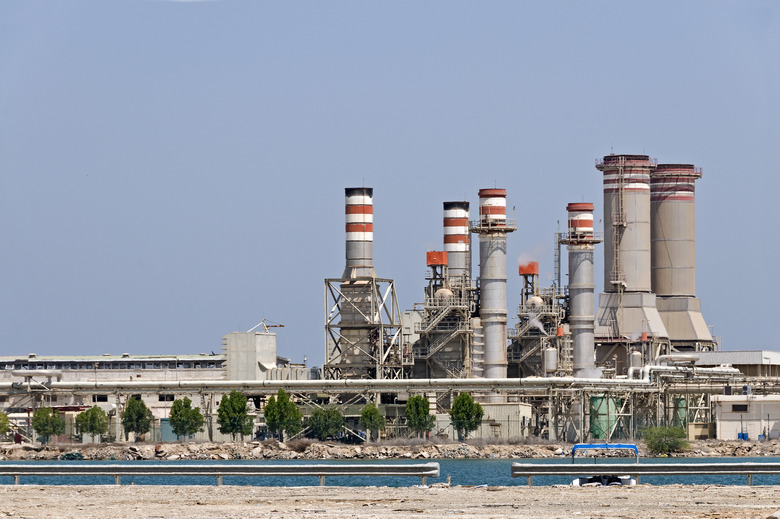Advantages & Disadvantages Of Desalination Plants
Desalination converts salty water into drinkable water by removing salt and other solids from seawater or brackish water. Although the desalination process has been around for centuries, desalination plants allowing large-scale treatment of water didn't come into being until the 1950s. In 2002, 12,500 desalination plants in 120 countries provided 14 million cubic meters per day of fresh drinking water. World-wide desalination plant capacity will nearly double by 2015. Read on to find out more about the advantages and disadvantages of using water desalination plants.
Advantage: Provides Accessible Drinking Water
Advantage: Provides Accessible Drinking Water
Water desalination plants can provide drinking water in areas where no natural supply of potable water exists. Some Caribbean islands get almost all of their drinking water through desalination plants, and Saudi Arabia gets 70 percent of its fresh water via the process. Even in countries where fresh water is plentiful, desalination plants can provide water to drier areas or in times of drought. The United States, for example, uses 6.5 percent of the world's supply of desalinated water.
Disadvantage: High Costs to Build and Operate
Disadvantage: High Costs to Build and Operate
It is very costly to build and operate desalination plants. Depending on their location, building a plant can cost from $300 million to $2.9 billion. Once operational, plants require huge amounts of energy. Energy costs account for one-third to one-half of the total cost of producing desalinated water. Because energy is such a large portion of the total cost, the cost is also greatly affected by changes in the price of energy. It is estimated that a one cent increase in the cost of a kilowatt-hour of energy raises the cost of of one acre-foot of desalinated water by $50.
Advantage: Quality and Habitat Protection
Advantage: Quality and Habitat Protection
Desalinized water generally meets or exceeds standards for water quality. Water desalination plants can also reduce pressure on freshwater supplies that come from areas that need protecting. By treating ocean water rather than removing it from sources that may also be habitats for endangered species, these important freshwater bodies can be preserved. In addition, removing salt water from the oceans can raise people's awareness about protecting these bodies of water.
Disadvantage: Environmental Impact
Disadvantage: Environmental Impact
The environmental impact is another disadvantage to water desalination plants. Disposal of the salt removed from the water is a major issue. This discharge, known as brine, can change the salinity and lower the amount of oxygen in the water at the disposal site, stressing or killing animals not used to the higher levels of salt. In addition, the desalination process uses or produces numerous chemicals including chlorine, carbon dioxide, hydrochloric acid and anti-scalents that can be harmful in high concentrations.
Cite This Article
MLA
Ackerman, Anne. "Advantages & Disadvantages Of Desalination Plants" sciencing.com, https://www.sciencing.com/advantages-disadvantages-desalination-plants-8580206/. 25 April 2018.
APA
Ackerman, Anne. (2018, April 25). Advantages & Disadvantages Of Desalination Plants. sciencing.com. Retrieved from https://www.sciencing.com/advantages-disadvantages-desalination-plants-8580206/
Chicago
Ackerman, Anne. Advantages & Disadvantages Of Desalination Plants last modified March 24, 2022. https://www.sciencing.com/advantages-disadvantages-desalination-plants-8580206/
